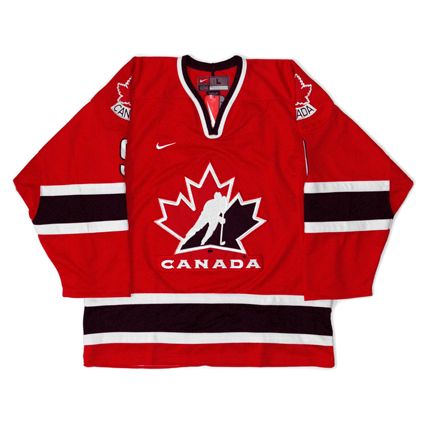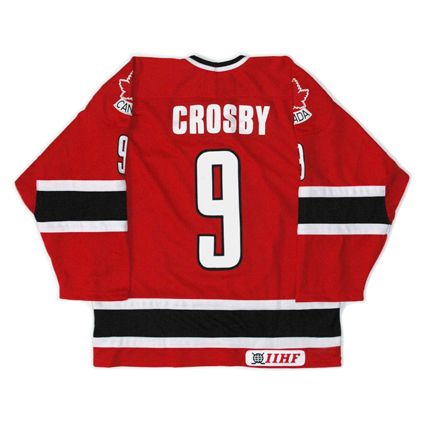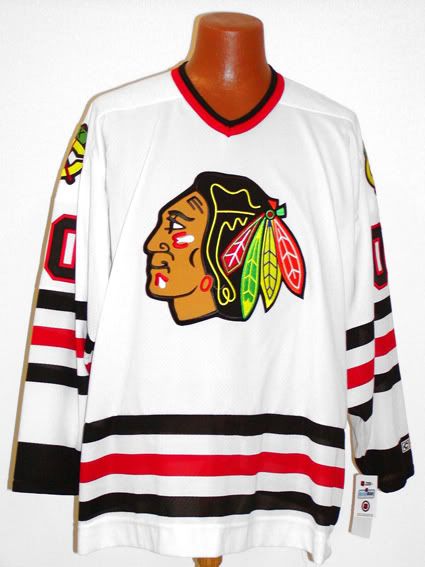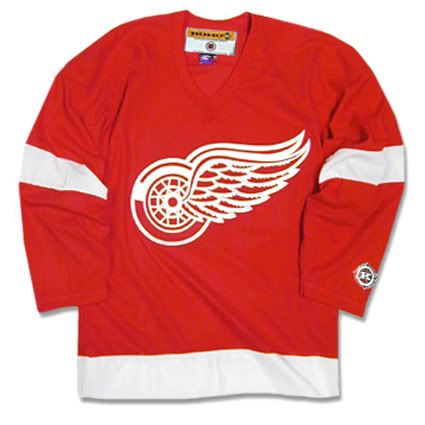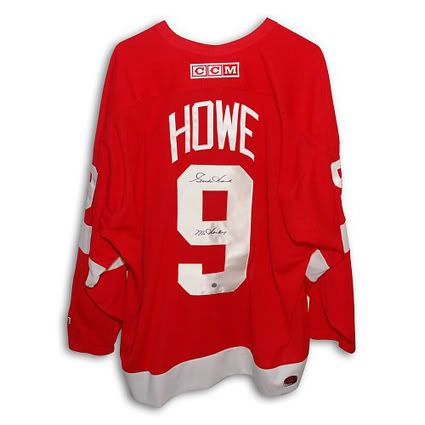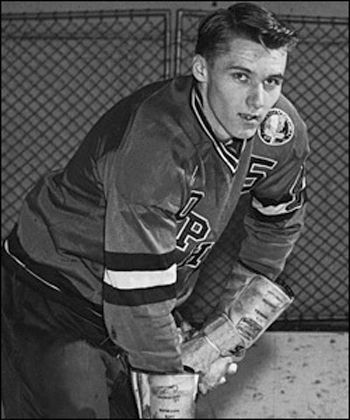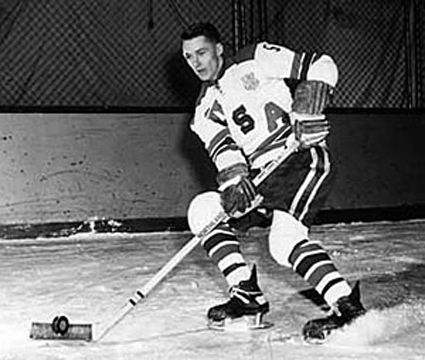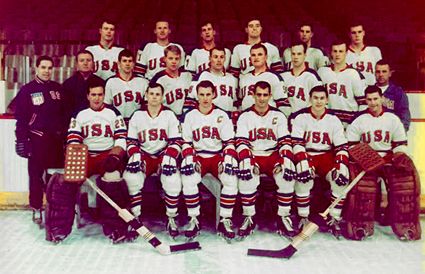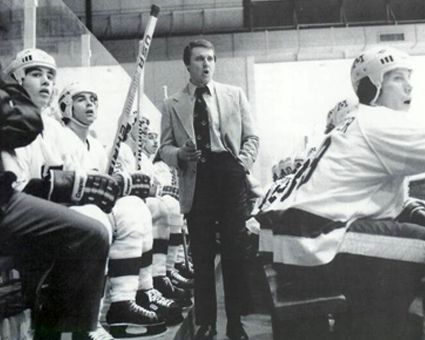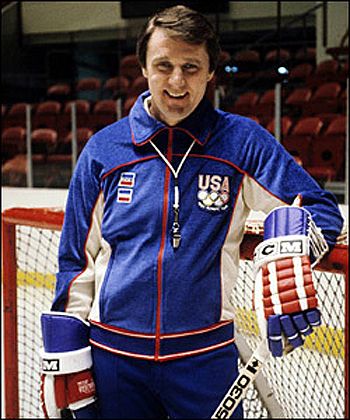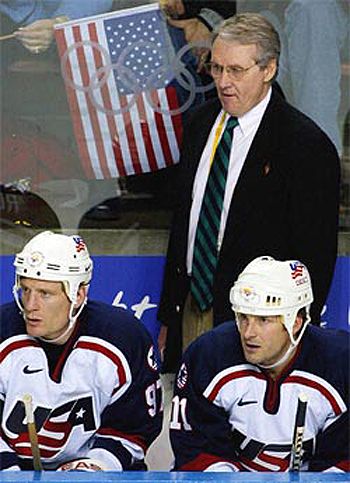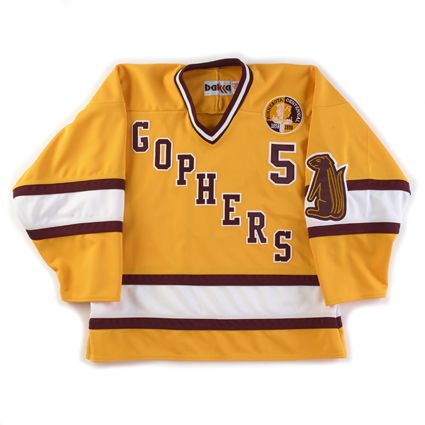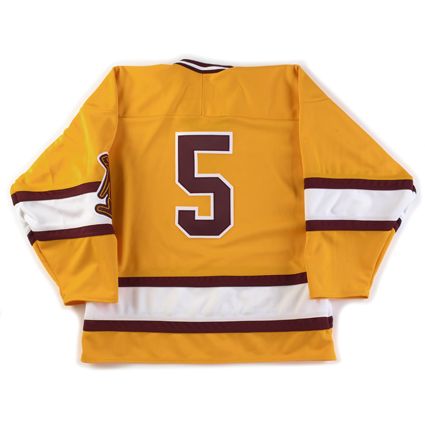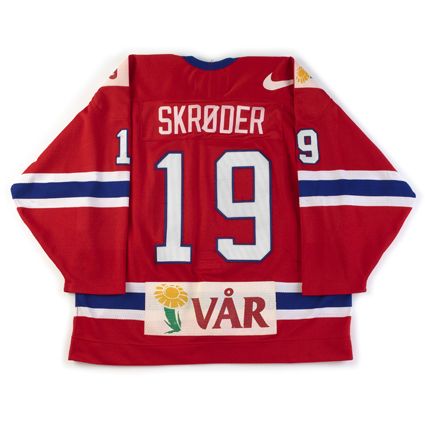Saturday, August 8, 2009
1979 NHL All-Star Ken Dryden Jersey
Born in Hamilton, Ontario on this date in 1947, NHL Hall of Famer Ken Dryden was drafted by the Boston Bruins in 1964, but chose instead to attend Cornell University in the United States to pursue a Bachelor of Arts degree. While at Cornell he helped The Big Red to three ECAC tournament championships and the 1967 NCAA title. In addition, he also played for the Canadian National Team at the 1969 World Championships, beginning a brief, but significant, international hockey career.
When Dryden refused to report to the Bruins, his rights were traded to the Montreal Canadiens for a pair of players who would never make it to the NHL. Dryden would make his NHL debut in 1971, seven years after being drafted, and play in just six regular season games, but his 1.65 goals against average would earn him the starting job as the Canadiens moved into the playoffs.
First up for the Canadiens were the heavily favored Boston Bruins, the same Bruins that Dryden had refused to play for. The Bruins were not only defending Stanley Cup Champions, but finished the regular season with an NHL best 121 points, 24 more than Montreal, but also feature the top four leading scorers that season (Phil Esposito, Bobby Orr, Johnny Bucyk and Ken Hodge all with over 100 points, while only one other player in the entire league had over 95) and six of the top eight!
Game 2 would feature one of the most remarkable comebacks in NHL history, as the Canadiens, who had trailed at one point 5-1 would get one back before the end of the second period ended and then score five times in the third to win 7-5 before going on to win the series in seven games.
The Canadiens would next face the Minnesota North Stars. The Canadiens would take the series 4 games to 2 to move to the finals to face the West Division winners, the Chicago Blackhawks.
The series would go the full seven games, with Chicago taking Games 1 & 2, with Montreal holding serve at home to even the series. The teams would once again trade games with the home team taking Games 5 & 6 to send it to a seventh and deciding game in Chicago.
Chicago would take a 2-0 lead by the halfway point of the game, but Jacques Lemaire would score from center ice to cut the deficit to 2-1. Henri Richard would score late in the second and two and a half minutes into the third to give Montreal a 3-2 lead while the rookie Dryden would shut down the Blackhawks the rest of the way to secure the Cup on the road, only the second team to ever do so in a Game 7. Dryden would be named the winner of the Conn Smythe Trophy, still with only 6 games of NHL regular season experience on his record.
During his first full NHL season in 1971-72, with a Stanley Cup victory already under his belt, Dryden would be named the winner of the Calder Trophy as Rookie of the Year.
His international resume would continue to grow, as as he would be named to Team Canada for the historic 1972 Summit Series, the first of it's kind for NHL professional players versus the Soviet Union. Dryden would finish with a 2-2 record, with both victories coming in Moscow in Games 6 and the decisive final Game 8, which featured Paul Henderson's historic late goal to give Canada bragging rights.
The Canadiens would go on to win five more Stanley Cups with Dryden in goal in 1973 and then four in a row from 1976 to 1979. Dryden would also be named the winner of the Vezina Trophy five times, back when it was awarded to the goaltenders of the team with the fewest goals against over the course of a season, in a career that would last only seven full seasons, as he sat out the 1973-74 season in a contract dispute, a year he would use to finish earning his law degree.
Dryden would retire at the age of 32 with a .790 winning percentage, a 2.24 goals against average and total 258 wins and 46 shutouts against only 57 losses.
He was elected to the Hockey Hall of Fame in 1983 and had his number 29 retired by the Canadiens in 2007.
Since leaving hockey, he has written several hockey books, including The Game and Home Game. For a time he did color commentary for hockey during the Olympics in the 1980's, including working with Al Michaels during the "Miracle on Ice" game between the USA and the Soviet Union in Lake Placid in 1980.
He became President of the Toronto Maple Leafs in 1997 until 2003 and in 2004 Dryden was elected to the Canadian Parliament.
Today's featured jersey is a 1979 NHL All-Star Ken Dryden jersey. That season the NHL broke from the usual East vs. West format in 1979 and instead, played a three game series versus the Soviet Union National Team in New York at Madison Square Garden called The Challenge Cup. The team was made up of NHL players from a variety of countries, not just Canadians as was the case in 1972.
The NHL All-Stars won Game One 4-2 behind the goaltending of Ken Dryden, but lost Game Two 5-4, also with Dryden in goal. Game Three was a walkover for the Soviets by a 6-0 score, with Gerry Cheevers in net for the NHL, giving the Soviets the cup, which they would famously display before a 10-3 exhibition game victory versus the 1980 US Olympic Hockey Team in an exhibition game at Madison Square Garden just prior to the 1980 Olympics in Lake Placid.
Since the Soviet Union wore their road red jerseys for each game, the NHL only wore their light colored home jerseys, so there is no road jersey of this style to be found. This is the oldest All-Star jersey style in my collection. The NHL logo on the front and shoulders are a fully embroidered patches and the name and numbers are all sewn on, a very nice level of quality for a jersey from this era.
Here is a pair of video tributes to the career of Ken Dryden.
The Canadiens dynasty of the late 70's is featured in this brief video.
Here is part one (of five) of Ken Dryden's jersey number retirement ceremony.
Finally, highlights from Game One of the 1979 NHL Challenge Cup, in which Dryden was the winning goaltender.
Labels:
Dryden Ken,
Montreal Canadiens,
NHL All-Star Game
Friday, August 7, 2009
2005 Team Canada Sidney Crosby Jersey
Today marks the 22nd birthday of the Pittsburgh Penguins captain Sidney Crosby.
Crosby began playing hockey at the age of two and learned to skate a year later like many little boys. From there, things stopped being "usual". He gave his first newspaper interview at age seven and at fourteen he was featured during Hockey Day in Canada on the CBC the year he scored 193 points for his AAA Midget team in 74 games.
He played in the United States in 2002-03 for Shattuck-St. Mary's in Minnesota, leading them to the U. S. National Championship with 162 points during 57 games. He was also the only player under 18 invited to join Canada's Junior National Team (generally a roster made up of 18 and 19 year olds) in 2003 at just 16 years of age, and became the youngest player to ever score a goal in the World Juniors. Only Jay Bouwmeester, Jason Spezza, Eric Lindros and Wayne Gretzky have played in the World Juniors at age 16 prior to Crosby.
Drafted first overall by the Rimouski Oceanic of the Quebec Major Junior Hockey League (QMJHL), Crosby scored eight points in his first exhibition game and was named Player of the Week for the first two weeks of the season, plus an additional four times during the remainder of the season. He would go on to be named Player of the Month three times leading to being capturing the Player of the Year Award, being named Top Rookie and winning the league scoring title with 54 goals and 81 assists for 135 points in just 59 games.
The following season Oceanic would set a record for 28 games without a loss, making it as far as the Memorial Cup Finals and Crosby would lead the league in scoring again with 66 goals, 102 assists for a total of 168 points. It would be the sixth consecutive season in four different leagues that Crosby would be the league leader in scoring.
Prior to being drafted by the Penguins, Crosby would play in two World Junior Championships, winning silver in 2004 in Helsinki, Finland and capturing gold in 2005 in Grand Forks, North Dakota against a Russian team that included both Alexander Ovechkin and Evgeni Malkin.
Six months later he would be once again drafted first overall in the 2005 NHL Entry Draft by the Pittsburgh Penguins, who won the draft lottery to determine the order of selection following the lockout year.
Today's featured jersey is a 2005 Team Canada Sidney Crosby jersey as worn in the 2005 World Junior Championships in Grand Forks, North Dakota. This is not only the same style that Canada wore during the championship final when Team Canada defeated Russia to capture the gold, but also the Crosby jersey that was stolen by an Air Canada baggage handler in Montreal after the tournament, which eventually ended up in a mailbox and was recovered.
This jersey also features the IIHF logo on the lower back as worn by all players in the World Juniors that year.
Here's a fourteen year old Crosby profiled in this TV news feature followed by another feature on his time with Rimouski Oceanic before being drafted by the Penguins.
Bonus Jerseys: In honor of the late film director John Hughes, whose many popular movies included the National Lampoon's Christmas Vacation and Ferris Bueller's Day Off, we here at Third String Goalie pay tribute to him with a pair of bonus jerseys.
First is a CCM Chicago Blackhawks Clark Griswold jersey from the movie National Lampoon's Christmas Vacation as worn by Chevy Chase.
Next up is a Gordie Howe Detroit Red Wings jersey as worn by Bueller's neurotic sidekick Cameron Frye in Ferris Bueller's Day Off.
First is a CCM Chicago Blackhawks Clark Griswold jersey from the movie National Lampoon's Christmas Vacation as worn by Chevy Chase.
Next up is a Gordie Howe Detroit Red Wings jersey as worn by Bueller's neurotic sidekick Cameron Frye in Ferris Bueller's Day Off.
Labels:
Canada,
Crosby Sidney
Thursday, August 6, 2009
Shootouts - The Good, The Bad and The Ugly
Since we're now into August and absolutely nothing in hockey history of interest happened on this date that even remotely relates to any of the jerseys in my collection, we've decided to take a look at some of The Good, The Bad and The Ugly goals in the NHL Shootout.
First up, the good, the amazing, the sublime and the down right miraculous.
And now for the worst, a collection of highly embarrassing moments for some surprisingly stellar talent from the likes of Ovechkin, Vanek, Naslund, Forsberg and Sedin among others.
It will be back to business as usual tomorrow with a return to our normal format and a featured jersey of the day.
Labels:
humor
Wednesday, August 5, 2009
1958-59 University of Minnesota Golden Gophers Herb Brooks Jersey
Herb Brooks played for the University of Minnesota Golden Gophers from 1955-56 to 1958-59, appearing in 75 games as both a wing and defenseman, totaling 18 goals and 27 assists for 45 points.
Following his college career, he was famously the last player cut from the gold medal winning 1960 USA Olympic team. After watching the USA win the gold medal on TV, Brooks' father turned and said "Obviously they cut the right guy."
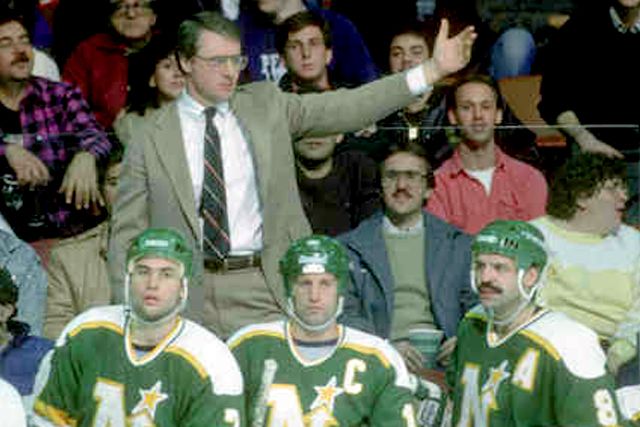
Back in Minnesota behind the bench for the North Stars where he would be reunited with Neal Broten (left) who he coached to an NCAA title with the Gophers and a gold medal in 1980
Following his college career, he was famously the last player cut from the gold medal winning 1960 USA Olympic team. After watching the USA win the gold medal on TV, Brooks' father turned and said "Obviously they cut the right guy."
Herb Brooks would go on to become a member of both the 1964 and 1968 USA Olympic teams in Innsbruck, Austria and Grenoble, France. In addition, he would play in five World Championships for the USA in 1965, 1967,1968, 1970 and 1971.
Following his playing career, Brooks would coach the University of Minnesota for seven seasons, beginning in 1972, leading the Gophers to WCHA championships in 1974 and 1975 and capturing the national championship three times, in 1974, 1976 and 1979. His final collegiate coaching record was 175-101-20.
After coaching Team USA at the 1979 World Championships, he was named general manager and head coach of the 1980 Olympic hockey team, earning a permanent place in history after guiding the team to the famous "Miracle on Ice", where he led a team of college players to a 4-3 victory over the heavily favored Soviet Union and then securing the gold medal versus Finland with a third period come-from-behind victory two days later.
After coaching in Switzerland for a year, Brooks would return to coach the New York Rangers for four seasons, being named The Sporting News Coach of the Year in 1981-82, before return to the college ranks for a year at St. Cloud State before coaching the Minnesota North Stars for a year. He later coached both the New Jersey Devils in 1992-93 and the Pittsburgh Penguins in 1999-2000. His final NHL record was 219-221-66.

Back in Minnesota behind the bench for the North Stars where he would be reunited with Neal Broten (left) who he coached to an NCAA title with the Gophers and a gold medal in 1980
In between coaching the Devils and Penguins, he also coached Team France at the 1998 Olympics. In 2002 in Salt Lake City, Brooks would once again lead Team USA, making it all the way to the finals and winning a silver medal.
He would be awarded the Lester Patrick Trophy for contributions to American hockey in 1980 as part of Team USA and would win the award again as an individual in 2002. He was also inducted into the United States Hockey Hall of Fame in 1990, the International Ice Hockey Federation Hall of Fame in 1999 and the Hockey Hall of Fame in 2006.
A statue of Brooks stands outside the River Centre in St. Paul, which is part of the complex that includes the Xcel Energy Center, home of the Minnesota Wild.
Today's featured jersey is a 1958-59 University of Minnesota Golden Gophers Herb Brooks jersey. This is a very rare jersey, as it was purchased as a group order of custom made jerseys for members of a Golden Gophers online forum and was never available through any online or retail stores. That changed with the creation of VintageMinnesotaHockey.com, who now offers anyone a chance to own this beautiful jersey from "America's Coach".
It's customized with the #5 that Brooks wore his senior season with the Gophers and also sports the Goldy Gopher patch on the left sleeve. It also has the ornate Minnesota Centennial patch on the upper left chest to finish off the look.
It's customized with the #5 that Brooks wore his senior season with the Gophers and also sports the Goldy Gopher patch on the left sleeve. It also has the ornate Minnesota Centennial patch on the upper left chest to finish off the look.
The "Miracle on Ice" was named the Top International Hockey Story of the Century by the International Ice Hockey Federation as part of their centennial celebrations and immortalized in the 2004 film "Miracle".
Labels:
Brooks Herb,
University of Minnesota,
WCHA
Tuesday, August 4, 2009
1999 Norway National Team Per-Åge Skrøder Jersey
Currently playing for Modo in the Swedish Elitserien, Per-Åge Skrøder was born on this date in 1978.
Skrøder has been a regular member of the Norwegian National Team since first playing in the European Junior Championships in 1995. He has also competed for Norway in the World Junior Championships in the B pool in 1997 followed by eight appearances in the World Championships in 1999 and 2000 in the A Pool, 2002, 2003 and 2004 in the lower Division 1 and in 2006, 2008 and 2009 back in the Top Division as well as the Olympic Qualifying Tournament in 2009 as Norway successfully won their group and earned the right to compete in the Olympics in Vancouver in 2010.
His record in the World Championships currently stands at 41 games played, 18 goals and 7 assists for 25 points.
As a professional, Skrøder has played four seasons in Norway's Eliteserien, one for his hometown club the Sparta Warriors of Sarpsborg, Lillehammer IHK for two seasons followed by a return to Sarpsborg for another.
He then moved over to the Swedish Elitserien beginning in 1998 with the Frölunda Indians where he played for two seasons. He then joined Linköpings HC for the 1999-00 and 2000-01 seasons before moving to HV71 the following season when he was named the 2002 Norwegian Player of the Year.
He won his first championship with HV71 in 2004 and played there until 2004-05, including competing in the European Champions Cup. The next season would see him on the move once more to Södertälje SK for the 2005-06 season and then onto MoDo in 2006-07 where he would help MoDo capture his second Swedish Elitserien championship with 10 points in 20 playoff games and another appearance in the European Champions Cup. 2008-09 with MoDo was Skrøder's finest as a professional, when he scored 30 goals for the second time in his career to lead the league, along with 29 assists for 59 points in just 55 games to win the Elitserien scoring title, the first Norwegian to do so, and was named the Norwegian Player of the Year for the second time in his career.
Today's featured jersey is a 1999 Norway National Team Per-Åge Skrøder jersey. Aside from the desire to a Norway jersey to my collection, I especially wanted this one because of the "Ø" in the name which gives it a much more "European" look. When the jersey arrived I was surprised to see that it was simply a standard "O" with an "I" glued over the top of it!
The Vår sponsorship logos are a heavy rather rubbery silkscreening. In addition, the Nike logos are also printed on the jersey as well, while the numbers are all sewn on. Also worth noting is the fairly large Norway Ice Hockey Federation crest on the front, which is blue screened onto white twill which was then sewn onto the jersey.
A very striking and colorful jersey with some excellent details that make it unique and definitely one of my favorites in my collection, especially when combined with the ongoing accomplishments of the player who wore it.
Here is an interview with Per-Åge from Modo TV. I assume he's speaking Swedish and not Norwegian, but either way, you are on your own as far as a translation goes...
Here is a highlight video of action from the MoDo club where Skrøder wears jersey #10.
And finally, Skrøder scoring for MoDo against Faräjestad, much to the delight of the home fans in Örnsköldsvik.
Labels:
Norway,
Skrøder Per-Åge
Monday, August 3, 2009
2001-02 University of Minnesota Golden Gophers Alternate Jordan Leopold Jersey
Born on this date in 1980, Jordan Leopold, a product of the US National Team Development Program (NDTP), competed for four seasons at the University of Minnesota. He would score 23 followed by 24 points during his first two seasons on the blueline for the Gophers before really hitting his stride with 49 points as a junior backed up with 48 points as a senior. He would captain the team during the 2001-02 season, which would see the Gophers capture the NCAA Championship on essentially home ice at the Xcel Energy Center in St. Paul, Minnesota, a mere eight miles from their home arena in Minneapolis, in front of over 18,000 screaming maroon and gold clad fans. He would also be named the winner of the 2002 Hobey Baker Award, the fourth Gopher to win the award after Neal Broten, Robb Stauber and Brian Bonin.
Leopold would be drafted #44 overall by the Mighty Ducks of Anaheim but would be traded to the Calgary Flames before ever suiting up for the Ducks. After three seasons in Calgary, where he would score a career high 33 points in 2003-04, Leopold would be traded to the Colorado Avalanche only to have his season ruined by an unbelievable run of injuries, which included hernia surgery, a groin injury and a fractured wrist - all in the same snake-bit season which saw him skate in just 15 games.
In 2004-05, Leopold would manage to get into 43 games while dealing with another litany of injuries which included a hip ailment, a lacerated leg, pneumonia and a concussion. Finally healthy in 2005-06, he would play in all 64 of the Avalanche's games up until the NHL Trading Deadline, when he would be dealt back to the Calgary Flames and appear in the Flames final 19 games to become the only player that season to play 83 games in a league with an 82 game season.
For the 2009-10 season, Leopold has signed to play with the Florida Panthers.
As part of the changing of the guard with Team USA, Leopold has now appeared for the United States in the 1999 and 2000 World Junior Championships, the World Championships four times (2002, 2003, 2005 and 2008) and the Olympics in 2006.
The jersey I am featuring today is a Nike 2001-02 University of Minnesota Golden Gophers alternate Jordan Leopold jersey as worn by the Golden Gophers during their National Championship season and Leopold's Hobey Baker winning season of 2001-02.
Here is a video of the 2002 National Championship Minnesota Gophers, followed by Leopold's memories of playing pond hockey as a youth.
Based on these next to highlights, Jordan Leopold apparently owns the Red Wings Chris Osgood.
Labels:
Hobey Baker Award,
Leopold,
University of Minnesota,
WCHA
Sunday, August 2, 2009
2000-01 Chicago Blackhawks Alternate Tony Amonte Jersey
Born on this date in 1970, former Chicago Blackhawks captain Tony Amonte played for Boston University before beginning his 16 year NHL career. Over time he would suit up for the New York Rangers, the Chicago Blackhawks, where he would play for nine seasons, the Phoenix Coyotes, Philadelphia Flyers and Calgary Flames.
His most productive season would come in the 1999-00 campaign when he would score 84 points from 43 goals and 41 assists while a member of the Blackhawks. His highest single season goal total was the year prior, when he would net 44 goals, one of three times he would score over 40 goals in his career. He would finish his NHL career with exactly 900 points and 416 goals in 1,174 games and make five NHL All-Star Game appearances from 1997 to 2001.
Between 1995 and 2002, Amonte would appear in 620 out of a possible 622 games, including a stretch from 1997 to 2002 when he would not miss a single game over five consecutive seasons.
In addition to his NHL career, the Massachusetts native would also play internationally for the United States in the World Junior Championships three times (1988, 1989 & 1990), the World Championships in 1991 & 1993, the Olympics twice, in 1998 and 2002, when he would earn a silver medal, and the World Cup of Hockey in 1996, helping the US capture the championship by scoring the game winning goal in the deciding game, which he has been quoted as saying is his top career highlight.
Today's featured jersey is a CCM 2000-01 Chicago Blackhawks alternate Tony Amonte jersey. It features the simple Chicago Blackhawks 75th anniversary arrowhead patch worn to commemorate their founding in 1926. Perhaps the team should have considered a re-colored version of this patch, as the Senators did for the Roger Nielson memorial patch, for this black alternate to allow it to stand out a bit more, as the mainly black patch does not stand out as well as it could on the alternate style.
While other teams have experimented with wild and outlandish alternate jersey designs, the Blackhawks kept it simple and simply promoted their black trim color used on both their home and road jerseys to the primary color on this alternate to great effect. I believe it's one of the most successful alternate styles in the NHL. First introduced in 1996, it remained unchanged until 2007 when all teams went without alternate jerseys for 2007-08 and was revived in 2008-09.
Aside from the Blackhawks 75th Anniversary patch the only other patch worn on this style jersey was the black version of the NHL 2000 patch.
While Amonte says his game winning goal in the 1996 World Cup is a career highlight, his four goal performance against the Toronto Maple Leafs must rank a close second.
Labels:
Amonte Tony,
Chicago Blackhawks
Subscribe to:
Comments (Atom)



